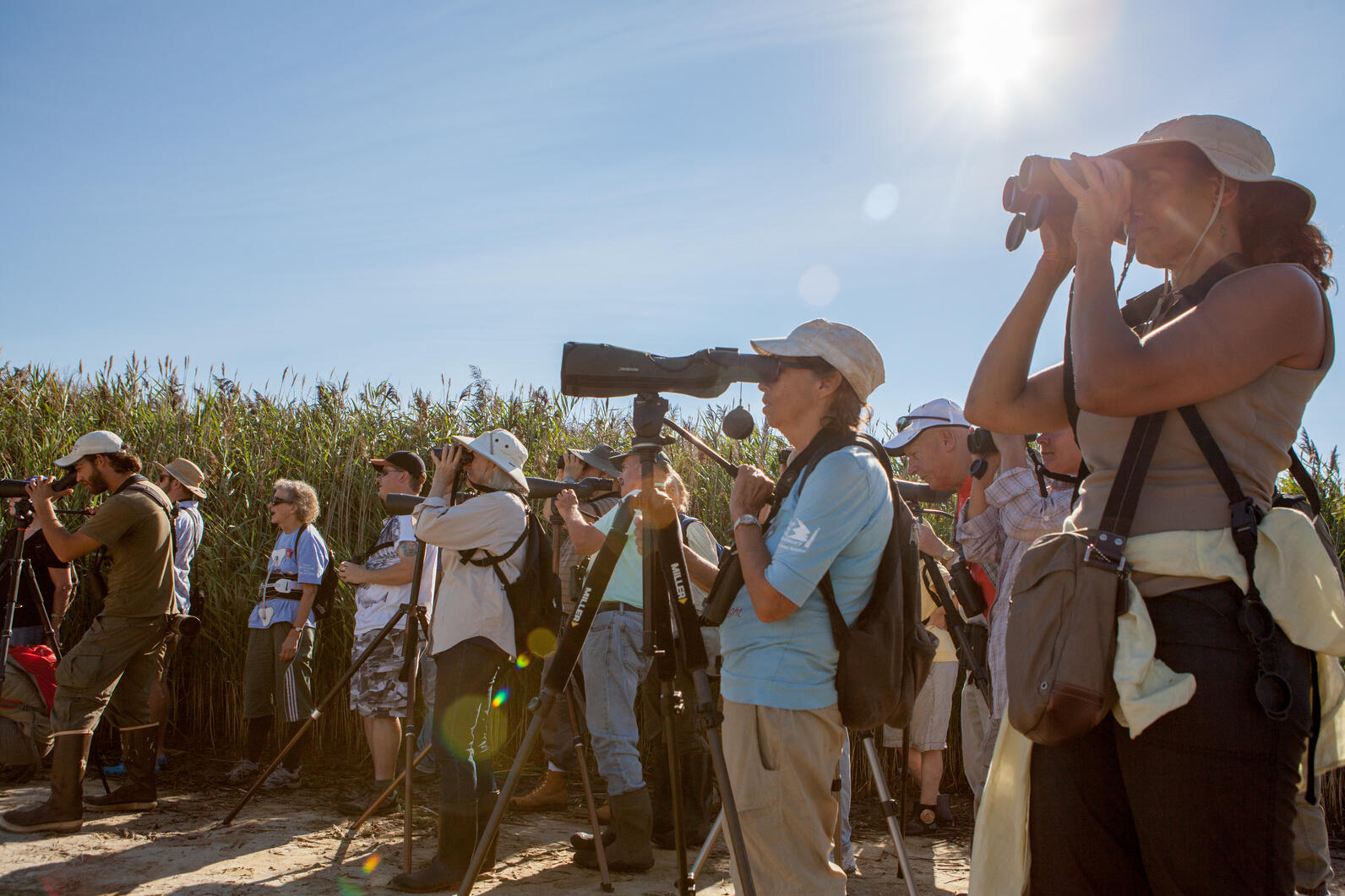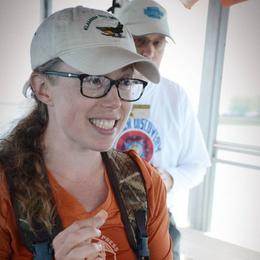It was an incredible year for birding across the Great Lakes region, as a number of birds that were outside their normal wintering and breeding areas for a variety of reasons, were spotted in our wetlands, and along our lakes. Among the rare vagrants spotted were several species native to Florida, including the Roseate Spoonbill, Limpkin, and American Flamingo. With winter on its way, birders are excitedly awaiting the arrival of northern finches and owls.
Year-round, hundreds of bird species draw us outdoors as they flit in the treetops, hop through shrubs, or run along our Great Lakes shorelines. But whether it is a rare vagrant, irruptive northern breeder, or a common backyard bird, it’s important for all of us to use best birding practices to protect our Great Lakes birds and visitors. Here are our top tips and some helpful resources to help guide your next birding trip:
- Keep a respectful distance. Getting too close to birds, and their nests, can cause them to flush (or fly away), interfering with their natural behavior and potentially preventing them from eating or caring for their young. If your approach causes a bird to flush, you’ve gotten too close.
- Think carefully before sharing the location of a rare bird. While rare bird sightings are thrilling, they can draw a crowd, which can cause disturbance.
- Share the Shore with Great Lakes beach nesting birds, like the Great Lakes Piping Plover. These vulnerable birds require special care as they rest and nest. By leashing pets and giving them plenty of space (more than 100 feet or 16 beach towels) we can help ensure their survival.
- Leave the use of drones to the pros. Although drones can be useful for researchers and biologists documenting bird populations (such as at island nesting colonies), drones in general can be very disruptive to birds, especially Osprey. They are also illegal in national parks and some state parks.

Below are some additional resources to help protect birds and habitat.
- Birding Code of Ethics. Developed by the American Birding Association back in 1999, the Code of Ethics highlights the important role that we all play in helping to build a better future for birds and the birding community, and reminds us that birds and birding opportunities are shared resources that should be open and accessible to all.
- Audubon’s Guide to Ethical Bird Photography and Videography. Audubon has compiled recommendations on how best to view and photograph birds in ways that avoid unnecessary disturbance or stress to birds, including land and shore-nesting birds, which are particularly vulnerable and require extra consideration.
- Best Practices for Stress Free Snowy Owl Viewing. Boreal and arctic owls visit the Great Lakes region each winter, making winter an exciting time to go owling. These best practices include recommendations on spacing needs, luring, and eBird reporting.
For more ethical birding and wildlife photography best practices, explore Audubon’s library of ethics articles. We hope you enjoy your next birding adventure!
About MI Birds
MI Birds is a public outreach and education program presented by Audubon Great Lakes and the Michigan Department of Natural Resources that works to build and bring together wildlife enthusiasts across the state to engage with and conserve Michigan's birds and public lands.









